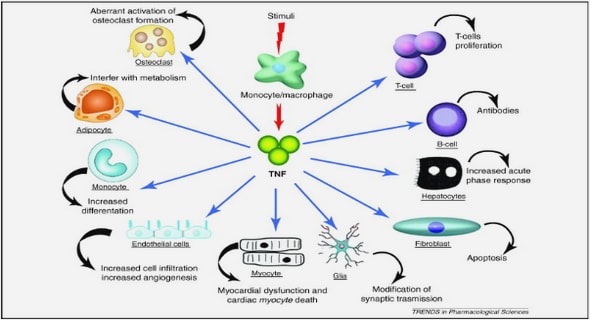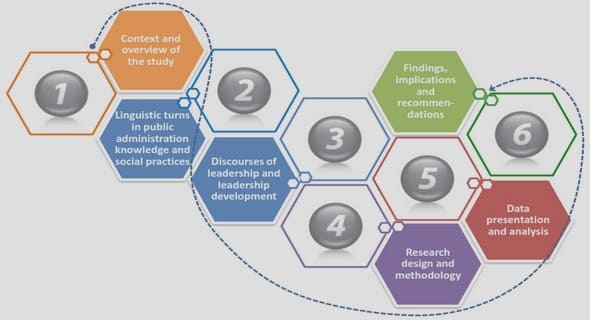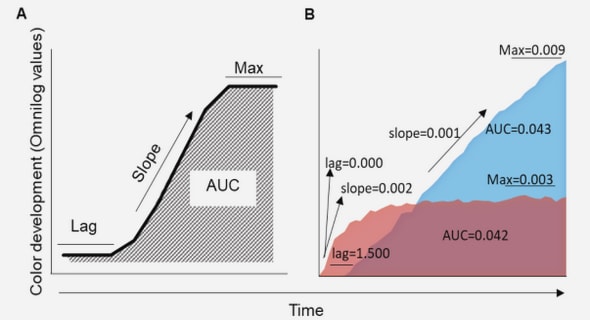Get Complete Project Material File(s) Now! »
CHAPTER THREE THEORETICAL FRAMEWORK
Introduction
This chapter is intended to place the study within the most relevant theoretical frameworks and models. Although there might be several theories that would be useful to an investigation related to the learning of students with disabilities, three theories are selected which the researcher believes are most relevant for examining and understanding the learning experiences of SVI in HEIs. First, the major conceptions in relation to disability are discussed with a particular focus on the biopsychosocial model. This is followed by discussions on the theory of inclusion and more specifically on inclusive curriculum. Finally, the bio-ecological theory, the major theory that underpins the research, is discussed. The understanding we have of disablement will determine policy and practice regarding students with disabilities. Institutional policies, curriculum and instructional practices will determine the learning experiences of students with disabilities in a university environment (the ecology) and ultimately their learning and growth. The relationship between the three theories in relation to the current research can be diagrammatically depicted as follows:
Theories of disability
Defining disability is complex and controversial. For a number of decades there has been a prolonged discourse on what is meant by disability, what the disabling factors are, and on the solutions to disability problems. As a consequence different models/theories have been developed. From among these different theories of disability the medical model and the social model stand out as the most prominent models.
The medical model was developed as a replacement to the traditional beliefs that an individual‘s physical or mental problems were caused by a curse or were a punishment. The medical model (also called the individual/personal tragedy model) was developed by medical institutions and personnel who maintained that the meaning of disability is associated with the physical or psychological impairments an individual has and the cure, therefore, should also be an appropriate medical intervention (Kuno 2008: 80; Waddell, & Aylward 2010: 10). In this model, disability can be defined as ―any restriction or lack (resulting from an impairment) of ability to perform an activity in the manner, or within the range, considered normal for a human being‖ (Kuno 2008: 84). The medical model equates disability with impairment and is distinguished by three defining characteristics:
Disability is viewed to be a personal problem located mainly within the individual.
The person‘s health condition is assumed to be the cause of disability.
The primary response to disability is considered to be a medical intervention (Ustun 1998: 4; Kuno 2008: 83).
The medical model of disability has received criticism and outright rejection by the disabled persons themselves. These criticisms were focused on its failure to consider the social context within which disability operates. This model was condemned as a deficient model both for its prime focus on impairment and for its disregard of the disabling cultural and environmental barriers (Hemingway 2007: 3; Ustun 1998: 4). Waddell and Aylward (2010: 11-12) further explains the criticisms, writing that, because of its emphasis on biology and disregard for psychosocial dimensions, the medical model fails to consider the unique personal attributes and subjective experiences of the person with an impairment in explaining disability.
Eventually, the activists of the disability movement developed their own model which considered disability as a form of social discrimination and oppression. According to this model, disability is totally and exclusively a socio-political issue (Kuno 2008: 85; Lang 2001: 2; Ustun 1998: 84-85; Waddell & Aylward 2010: 13). The proponents of this model strongly argue that disability is the result of the limitations imposed on people with impairments by the social, cultural and environmental barriers and not the result of their impairments. It is asserted that society is responsible for the existence of disability either by creating these barriers or failing to remove them (Albert 2004: 3; Lang 2001: 4). In this regard, Oliver (2004: 21), a renowned disability activist who coined the phrase ‗social model‘, explains that:
… the social model of disability is about nothing more complicated than a clear focus on the economic, environmental and cultural barriers encountered by people who are viewed by others as having some form of impairment – whether physical, sensory or intellectual.
According to the social model, the removal of these environmental barriers requires social intervention that focuses not on individuals but on the society as whole. Society should take collective responsibility for making all necessary modifications in the environment so as to make possible the full participation of disabled people in all areas of social life (Kuno 2008: 86; Waddell & Aylward 2010: 14).
The proponents of the social model make distinctions between impairment and disability. While impairment is a biological and functional attribute, disability refers to the experiences individuals have as a result of the social and environmental barriers they face in society (Hemingway 2007: 4; Waddell & Aylward 2010: 14). Thus, disability is a ―socio-cultural rather than a biological construct‖ (Lang 2001: 4).
In spite of its widespread acceptance, primarily by disabled persons themselves, the social model has been subject to criticisms. One criticism was that this model ignores the problems of impairment and therefore ignores the medical interventions that are necessary for some disabled people. It is argued that the removal of social and environmental barriers cannot fully solve the problems of disabled persons because of the complexity and severity of certain types of impairments (French 1993 & Thomas 1999, in Barnes: 19; Lang 2001: 19; Waddell & Aylward 2010: 14). In this regard, Crow (1996, cited in Lang 2001: 23) argues that:
… impairment such as pain or chronic illness may curtail an individual‘s activities so much that the restriction of the outside world becomes irrelevant … for many disabled people personal struggles relating to impairment will remain even when disabling barriers no longer exist.
Another criticism is that the social model is advocated by disabled people in developed countries whose basic needs for assistive devices and health care have already been provided for. Therefore, they are fighting for their social rights. According to this argument, this does not apply in developing countries where lack of assistive equipment is the most critical problem (Albert 2001: 6).
There are some critics who claim that the social model of disability has served its purpose in attracting attention to the social and environmental problems of disabled persons and therefore is no longer important. In this regard, Barnes (2012: 12) explains that the social model was initially developed with the purpose of diverting the focus away from the functional limitations of disabled people and onto the environmental disabling barriers so that appropriate policies and practices to facilitate their eradication could be generated. Shakespeare and Watson (1997, cited in Barnes 2012: 19), who were previously proponents of the social model, also argue that this model is an outdated ideology since the disability/impairment division upon which the model is based is difficult to sustain, claiming that impairment has some role to play in disablement. They reiterate that the focus of the social model on removing disabling barriers is unrealistic.
Oliver (2004: 8-9) identifies five main criticisms of the social model that have been made within the discipline: that the social model ignores or is unable to deal adequately with the realities of impairment; that it ignores our subjective experiences of the ‗pain‘ of both impairment and disability; that it is unable to incorporate other social divisions, such as ethnicity, age, gender, sexuality; that it cannot be used in order to describe the way that disabled people are socially positioned as ―other‖; and that it is inadequate as a social theory of disability. Feminist writers have stated that the social model over-emphasizes socio-structural barriers and ignores personal and experiential aspects of disability (Reeve 2004). Morris (1991, cited in Cameron 2008: 15), for instance, has suggested that ―there is a tendency within the social model to deny the experiences of our own bodies‖.
In response to these criticisms, some scholars have tried to expand the social model in a way that would help for a full understanding of the concept of disability (Cameron 2008: 15). One of these is the modified social model which has tried to integrate the medical and social models. The World Health Organization (WHO), which was responsible for the development of the medical model, now developed this new modified model, known as the biopsychosocial model. This model sees the problems of disabled people from biological, individual and social perspectives (Kuno 2008: 87; WHO 2001: 20). According to this model, disability is created as a result of the interaction of individual and contextual factors, and is not created solely either by impairments or by the social environment (Schneider 2006: 9; Waddell & Aylward 2010: 22). Thus, according to Schneider (2006: 8), ―one must look at both the individual and the environment if one is to describe a person‘s experience of disability accurately and comprehensively‖. In justification of this model, Waddell and Aylward (2010: 22) argue that human beings are biopsychosocial by nature with ―an integrated whole of body and mind in a social being‖ and therefore any disability model should be comprehensive to reflect this human nature.
The biopsychosocial model has received support from certain disability organizations. The Australian National Mental Health Consumer and Carer Forum (NMHCCF) (2011), for example, has shown its acceptance of this model by adopting the name psychosocial model in reference to people living with severe mental health conditions. According to this model, disability is the result of a complex interaction between the functional limitations of individuals with severe mental health conditions and the environment in which they live. WHO (2001) also claims that many disability organizations and disabled people have contributed for the development of the new International Classification of Functioning, Disability and Health (ICF), which is the basis of the biopsychosocial model. UNESCO (2009: 103), in one of its publications, has acknowledged the contribution of the functional limitations of the individual to disablement as follows:
Disability is the outcome of complex interactions between the functional limitations arising from a person‘s physical, intellectual, or mental condition and the social and physical environment. It has multiple dimensions and is far more than an individual health or medical problem.
However, this new blended model also is not without criticism. The major criticism is that, in spite of the attempt to synthesize the two polarized models, medicalization still seems to stand out as an underlying principle of this new model which, it is claimed, is clearly visible in its name – biopsychosocial (Barnes 2012: 16; Kuno 2008: 88).
The researcher, however, acknowledges the limitations of the social model in fully explaining the experiences of students with disabilities. He is of the opinion that students with impairments will not have the same type of learning experiences even in situations where all possible accommodations are made and all social and environmental barriers are removed. For example, a student with visual impairment‘s learning experiences will be influenced by a number of visual phenomenon in spite of every effort his/her instructors, and the institution at large, make to create a user-friendly learning environment. In addition, the social model is aligned with the bio-ecological theory which underpins the current research, since it views disability as the result of the interaction between the characteristics of the individual and contextual influences in which he/she operates. Therefore, in spite of the criticisms it faces, the researcher is of the opinion that the biopsychosocial model serves well for disability-related research and other social interventions. He has thus adopted it for his current research.
Theory of inclusion
Inclusion has remained a very complex concept with different dimensions that have proved to be difficult to define. Thus there is no single, agreed-upon definition of inclusion (Giangreco, Carter, Doyle & Suter 2010: 248). UNESCO (2005: 13) defines inclusion as a ―process of addressing and responding to the diversity of needs of all learners through increasing participation in learning, cultures and communities, and reducing exclusion within and from education‖. Inclusive education focuses on transforming education systems in a way that they can address the needs of diverse learners. It emphasizes giving equal opportunity for students with disabilities to participate in education. Similarly, Ainscow (1999: 218) defines inclusion as a ―process of increasing the participation of pupils in, and reducing their exclusion from, the cultures, curricula and communities of their local schools‖. He further stresses that inclusive education should focus on the elimination of barriers that hinder learning and participation of all students.
According to UNESCO (2005: 16), there are four major elements in the conceptualization of inclusive education. These are the following:
Inclusion is a process. It has to be seen as a never-ending search to find better ways of responding to diversity.
Inclusion is concerned with the identification and removal of barriers.
Inclusion is about the presence, participation and achievement of all students.
Inclusion involves a particular emphasis on those groups of learners who may be at risk of marginalization, exclusion or underachievement.
Inclusion starts with the recognition and appreciation of differences that exist in a classroom and an educational institution in general. These differences are valued and are considered an important input to the teaching and learning process rather that a problem. Instructors are expected to respect and build on those differences in developing inclusive approaches to teaching and learning (Booth & Ainscow 2002: 3-4).
Inclusive education can be viewed from a broader social justice perspective. UNESCO (2001:
16) asserts that inclusive education is a human rights issue. Different UN conventions starting from the Universal Declaration of Human Rights (1949) have acknowledged education as a human right. The World Conference on Education for All (1990) and the United Standard Rules on the Equalization of Opportunities for Persons with Disabilities (1993) reaffirmed education as a basic right for all peoples while acknowledging the exclusion of some members of the society from education. Thus inclusive education was a response to the quest for strategies to address this basic right of students with disabilities.
The underlying rationale behind inclusive education is that students with disabilities will learn best and develop important social skills that are necessary for their future lives if they are educated in an environment where they would have been taught if they had not been disabled. This would mean that they will learn with their non-disabled peers with necessary support provided to facilitate their participation in all activities. Jackson, Ryndak and Wehmeyer (2008-09: 180) emphasize this idea by writing:
It is within the context in which all children of a particular age participate that developmental growth is most likely to occur, and that approximations to the standing patterns of behavior in those contexts – including academic, social and interpersonal behaviors – is what defines growth.
This is consistent with the ecological systems theory of human development which underpins the current research.
At the heart of the move towards inclusive education lies curriculum. If education is to serve all learners on an equitable basis, the curriculum has to be flexible enough to allow for necessary modifications and adaptations to meet the needs of individual students. These modifications and adaptations of the curriculum are to be made during its design phase as well as during its implementation to make it meaningful, relevant and accessible to all students (Hockings 2010: 1; UNESCO 2005: 25-26).
TABLE OF CONTENTS
CHAPTER ONE: INTRODUCTION AND BACKGROUND TO THE STUDY
1.1 Introduction
1.2 Background of the Study
1.3 Significance of the Study
1.4 Statement of the Problem and Research Questions
1.5 Aims and Objectives of the Study
1.6 Research Design and Methodology
1.7 Definition of Key Concepts
1.8 Delimitations
1.9 Chapter Divisions of the Study
1.10 Concluding Remarks
CHAPTER TWO: LITERATURE REVIEW
2.1 Introduction
2.2 The Higher Education System
2.3 Accessibility of HE Curriculum
2.4 Concluding Remarks
CHAPTER THREE: THEORETICAL FRAMEWORK
3.1 Introduction
3.2 Theories of Disability
3.3 Theory of Inclusion
3.4 Bio-ecological Systems Theory
3.5 Concluding Remarks
CHAPTER FOUR: RESEARCH DESIGN AND METHODOLOGY
4.1 Introduction
4.2 Research Paradigm
4.3 Research Design
4.4 Research Methods
4.5 Trustworthiness
4.6 Ethical Considerations
4.7 Concluding Remarks
CHAPTER FIVE: FINDINGS AND DISCUSSIONS
5.1 Introduction
5.2 Institutional Background and Profile of Participants
5.3 Presentation of Findings
5.4 VIS Experiences of Transition to University
5.5 VIS experiences of Teaching and Learning
5.6 Learning Environment
5.7 VIS Experiences with Assistive Technology
5.8 VIS Use of Library Services
5.9 VIS Experiences with Assessment Practices
5.10 Administrative Support
5.11 Peer Support and Perceived Problems
5.12 Concluding Remarks
CHAPTER SIX: SUMMARY, CONCLUSIONS AND RECOMMENDATIONS
6.1 Introduction
6.2 Summary of Key Findings
6.3 Theoretical Framework Revisited
6.4 Conclusions
6.5 Recommendations
6.6 Strengths, Contributions and Limitations of the Study
6.7 Concluding Remarks
REFERENCES
GET THE COMPLETE PROJECT


